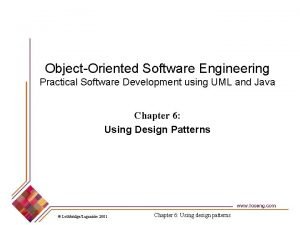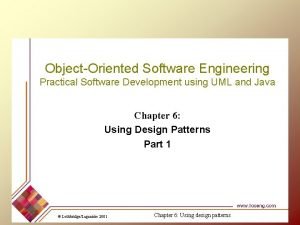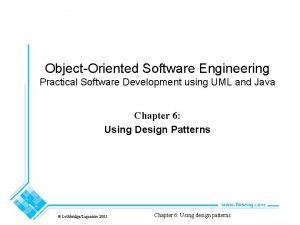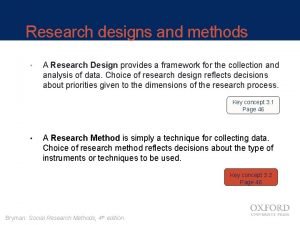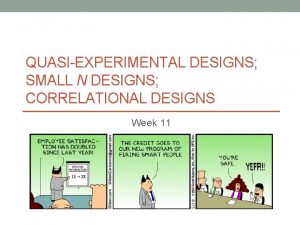2 Survey Methods Research Designs Methods Research design







- Slides: 7

2. Survey Methods Research Designs & Methods Ø Research design: the strategy and overall framework of the research. Example: A survey design. Ø Research method: how the data is collected. Example: A questionnaire. © onlineclassroom. tv 2007

2. Survey Methods A survey involves collecting a large amount of data from a wide variety of people. Design involves: Defining concepts (tools sociologists use to describe the social world) – e. g. social class. Operationalising concepts (finding ways of measuring key concepts): eg. classifying occupations as indicators of class. Collecting data using most suitable research method. © onlineclassroom. tv 2007

2. Survey Methods Questionnaire: A set of pre-planned standardised questions that can be distributed by hand or post. General design principles: Ø Keep questions clear and simple. Ø Keep questions as short as possible. Ø Avoid questions that are open to different interpretations. © onlineclassroom. tv 2007

2. Survey Methods Correlations Survey research enables us to document correlations in a precise and measurable way. Correlation: a measure of the degree to which two variables are related. For example: Ø Variables = socio-economic background and educational success. Ø Possible correlation: Students from poorer socio-economic backgrounds tend to have lower educational motivation. © onlineclassroom. tv 2007

2. Survey Methods Types of Question Closed: Respondent picks answer from list of possibilities. For example: “Do you like coffee? ”: Yes No Don’t Know “Getting good grades at A-Level is important to me”: Agree very strongly Agree strongly Neither agree nor disagree Disagree strongly Disagree very strongly Or is asked to provide short piece of information: E. g. “What is your father’s occupation? ” Open: Respondent answers in their own words: e. g. What do you like about your school / college? © onlineclassroom. tv 2007

2. Survey Methods Advantages Ø Coding and Quantification: The use of pre-coded questions makes it easier to quantify data. Ø Ease of Completion: A closed questionnaire is relatively quick and easy to complete. Ø Anonymity: may improve validity of collected data (can avoid interview / interviewer effects). Ø Sampling: Contact and question large numbers of people quickly, easily and efficiently. Ø Reliability: Easy to standardise - everyone answers the same questions. © onlineclassroom. tv 2007

2. Survey Methods Limitations Ø Validity: Difficult to examine complex issues and opinions in depth and detail. Ø Lacks flexibility: cannot ask follow-up questions or ask for clarification. Ø The Meaning problem: the same word can mean different things to different respondents. Ø Response Rate for postal questionnaires may be very low. © onlineclassroom. tv 2007



